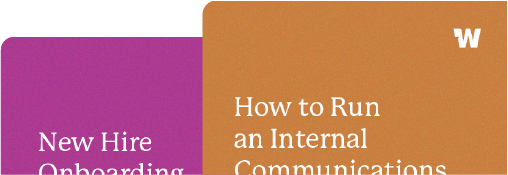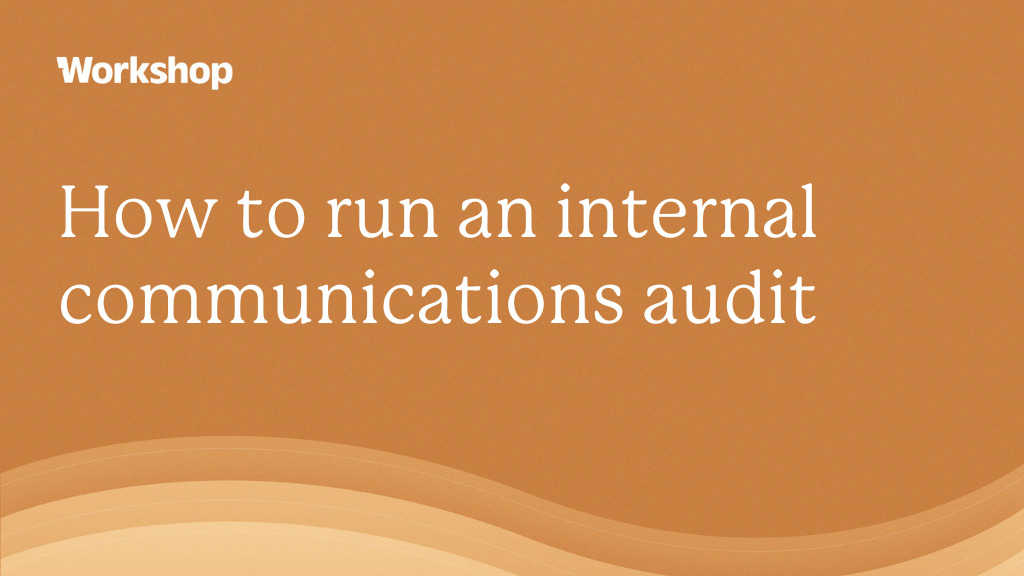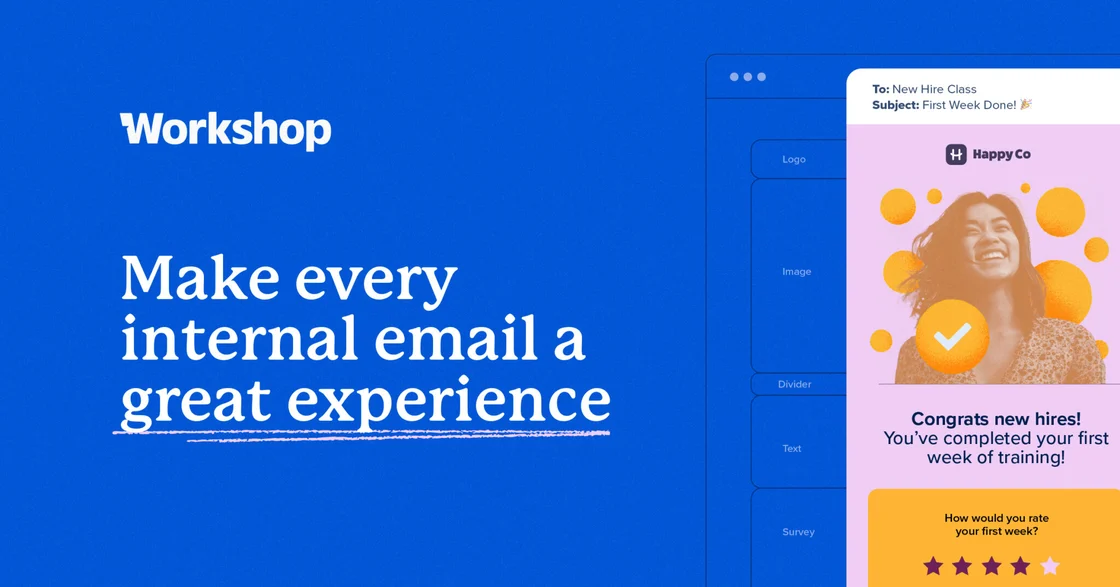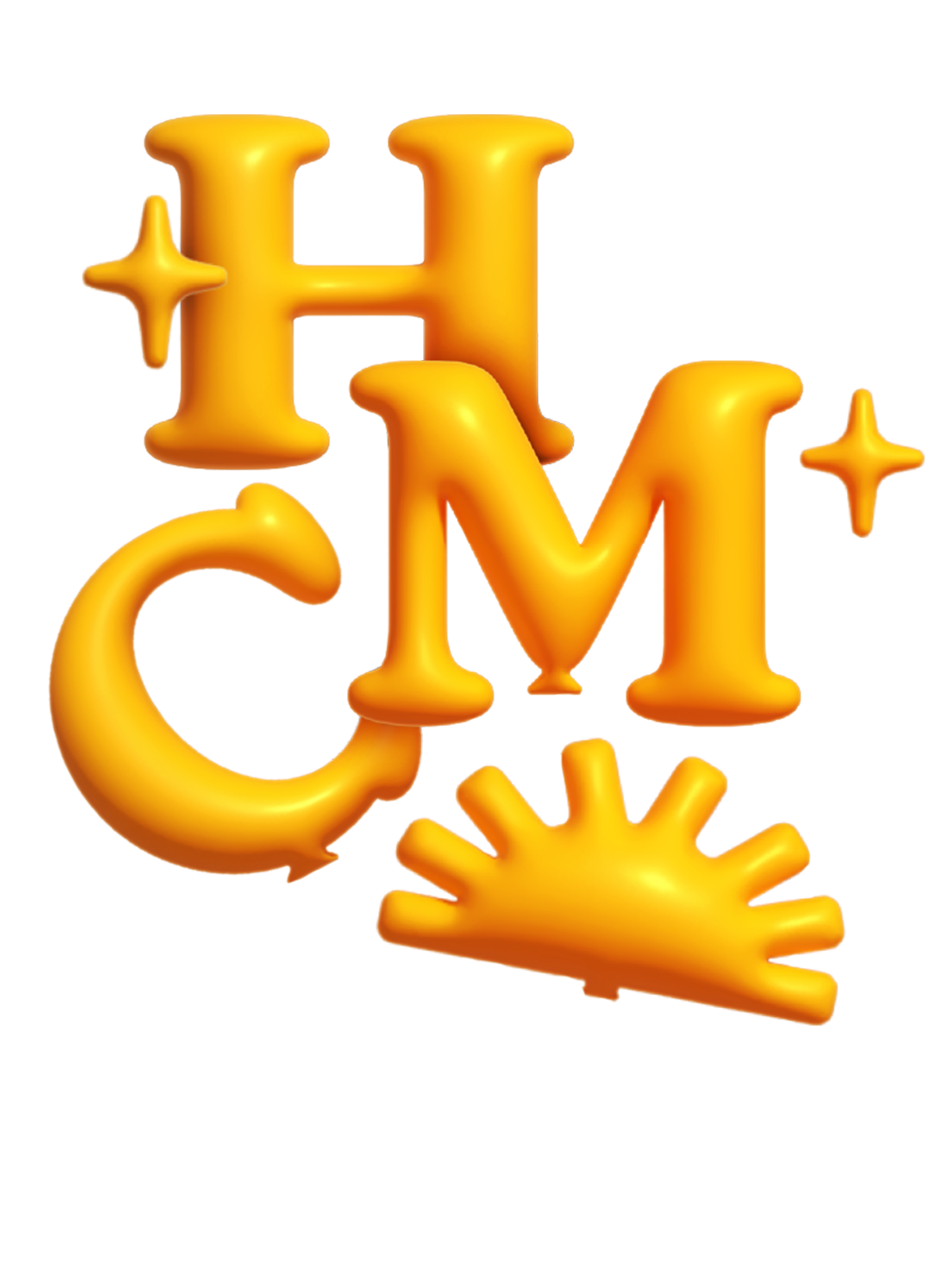The top internal communication trends for 2024

We surveyed 100s of communicators from across the globe to get the scoop on what channels they are prioritizing in 2024, what channels they find most effective, their goals, hopes, & dreams, what challenges they are facing in their role today, and emerging trends in internal communications! So if you’re curious about exploring employee influencers or digging into manager comms, you’ve come to the right place. Here are the top trends that internal communicators are interested in exploring next year (and some tips and tricks for each trend)!
Employee engagement
Increasing engagement across the company so people feel seen and heard will be top of mind for internal communicators in 2024. Engaging employees is not only the top goal for IC pros but also the top challenge they face.
“I hope to improve engagement across the company so people feel seen and heard…” – Answer from our free-response question
Our first recommendation is to conduct an internal communications audit! Conducting a full audit of your efforts can help you identify where you might be missing the mark with your internal comms, including gaps in information, messages that aren’t reaching your audience, miscommunications, and channels that aren’t delivering the way you wanted them to. It can also help you establish a benchmark to measure performance and engagement over time and give you a roadmap to start allocating your resources more effectively.
(We have a 7-step guide that will help you run a complete audit of your company’s current internal communications.)
Manager communication
Whether it’s communicating to manager or training managers to become better communicators themselves, every single organization seems to be interested in comms at this level. Both in the identified top trends and our open-ended responses, a recurring theme for the upcoming year is the heightened emphasis on gaining support and active engagement from leadership across the organization (at the top and in the middle). In fact, it’s the top trend (56%) that internal communicators are interested in exploring this year.
One of our recommendations is to lean into leadership comms to help improve manager comms! (After all, effective, consistent communication is the #1 job of any CEO.) A great place to start? A weekly CEO email. A few things we have seen included in a good CEO email are: a warm introduction, a place to celebrate your customers or culture, an overview of the company’s progress toward goals & key metrics, and a place for the CEO to share a few things that are on their mind. Additionally, consider giving these weekly emails a specific title and consistent branding. This way, it’s easy for employees to find the emails in their inbox, or reference past editions.
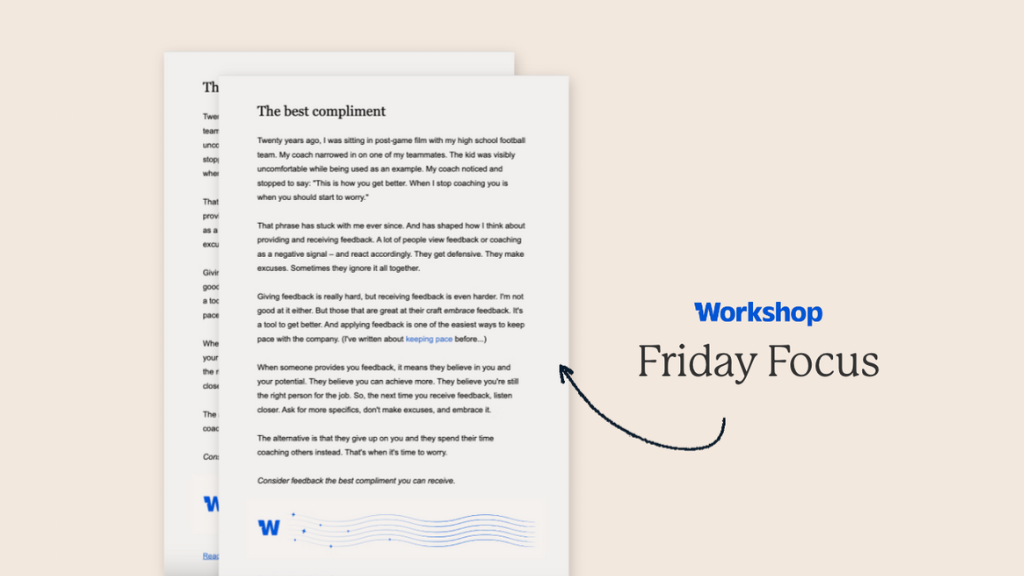
(If you’re looking for a place to get started, we have a weekly CEO email template that may help! You can grab your copy here.)
Effective email communication
Despite the rise of various communication platforms, email remains a cornerstone of communication in the workplace, with 94% of internal communicators citing it as part of their current strategy and 70% citing it as their most effective channel and tactic to use when communicating with employees. And it makes sense why! Email works across all generations and locations globally. It connects employees on a personal level, keeps them informed, and is the foundation of any great comms strategy.
Although email is a very effective channel, communicators face challenges in engagement and delivering personalized content. The solution? Personalization, segmentation, and well-branded emails designed for unique employee experiences.
Through personalization, internal communicators can create relevant content and engage employees in a unique and better-than-ever email experience. With a tool like Workshop, you have access to a whole suite of personalization features so you can easily create, send, manage, and measure engaging email campaigns and internal communications.
We’d love to show you how Workshop can help elevate your internal communications strategy. Schedule a demo today!
Employee influencers
More than half (55%) of internal communicators are interested in exploring employee influencers, and 43% are interested in exploring thought leadership. And it makes sense why! Studies have shown that employee posts on social media can generate 8x more engagement than when shared through official brand accounts.
An employee influencer is someone within the organization who can impact the way external or internal audiences view, interact, or form opinions about your brand, product, or services. And the good news: Every single one of your employees has the potential to become a spokesperson.
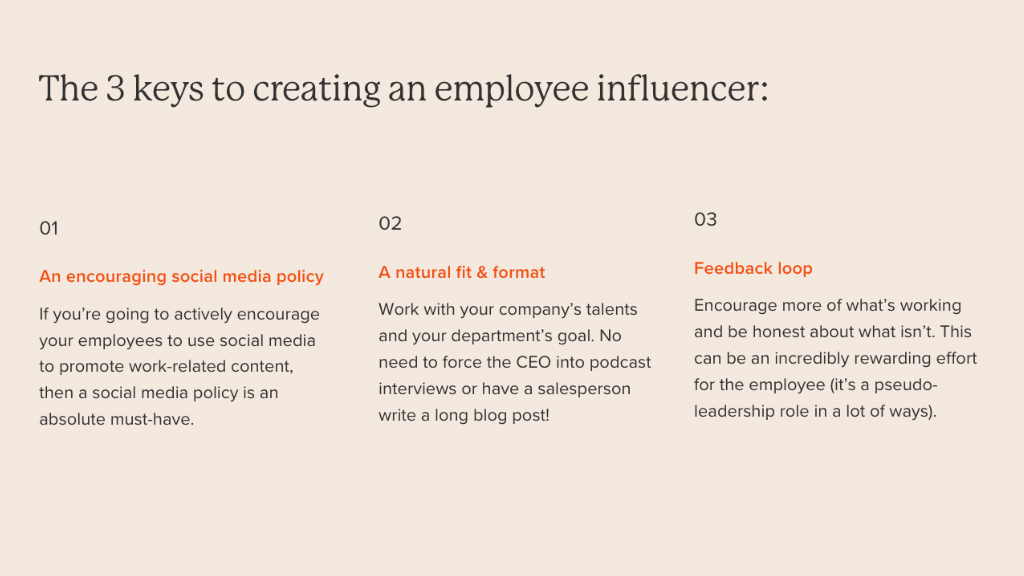
When it comes to creating an employee influencer, we recommend having three things in place:
An encouraging social media policy: If you’re going to actively encourage your employees to use social media to promote work-related content, then a social media policy is an absolute must-have. (If you need a little help with creating a clear set of guidelines that empowers your employees to be brand ambassadors, we have a social media policy template to help you get started!)
A natural fit & format: Work with your company’s talents and your department’s goal. No need to force the CEO into podcast interviews or have a salesperson write a long blog post. Try a pilot! Select a small group of team members (maybe 5 or so) who would be great influencers. They can be from any part of the organization, from the CEO to a frontline worker. Work with those employees individually to figure out where their natural talents lie and come up with a creative strategy for how they could promote a specific part of the company’s culture.
Feedback loop: Don’t launch an employee influencer program and forget about it. Feedback should be ongoing! Encourage more of what’s working and be honest about what isn’t. This can be an incredibly rewarding effort for the employee (it’s a pseudo-leadership role in a lot of ways). We like to gather feedback from employee influencers by sending out a quick pulse survey so you can gauge how they are feeling about the program (and tweak the program as needed).
Bonus: With a tool like Workshop, you can embed pulse surveys directly into your internal emails to gather feedback on your employee influencer program!
Engaging content
Our survey showed a genuine interest in establishing meaningful connections with employees by using engaging content. But even though we know there is a need to create these connections through engaging content, you may be wondering: How do you send relevant, engaging content? How do you encourage employees to take action when they need to? Here are five quick ideas to help with engaging content:
Create a branded experience: One of our favorite ways to create a branded experience for employees is through creating mini brands around specific campaigns. It helps employees know what to expect from a specific email and develop an affinity for it; in many cases, it leads the employee to actually look for that email in their inbox, which is fantastic.
Get feedback: If you are looking to gather feedback from your employees, there’s no need to overcomplicate things; simply ask for it! Encouraging replies to an email or a piece of content is a great way to get thoughtful ideas and in-depth responses from all over the organization.
Add motion: We love adding video or gifs to our internal content. Not only does it add a splash of personality, but it can add practicality, too! You can animate a button to call attention to it or an arrow to point out a really compelling section of the email. Think of ways to use motion to encourage someone to interact with your call to action.
Personalize the content: We’ve already said it once in this post, but personalization is one of the best ways to create engaging content. One way to personalize content is through the use of merge tags, where you insert the employee’s first name into the email or subject line. It could also be used for all kinds of other fields, like employee anniversaries, location, and more. (In Workshop, you can use any HRIS or custom field you can think of!)
Add moments of delight: We love adding small moments of delight to keep employees engaged and surprised with each piece of content we produce. You could achieve this through a miscellaneous section in your employee newsletter or by incorporating more interactive, fun elements like trivia or quizzes.
We did a deep dive into each of these in our 5 new ways to engage employees via email blog post
Employer branding
Employer branding is a trend that internal communicators are looking to explore more of in 2024, as organizations recognize the pivotal role it plays in attracting and retaining top talent. In today’s job market, it’s not enough to have a competitive salary; current (and future) employees want to work for a company that they are proud to represent and support. Employer branding involves creating a distinctive and positive identity that reflects the company’s values, culture, and overall employee experience.
It’s important to note that employer branding goes beyond marketing (both internally and externally) the organization’s values and culture. It’s actively working on building a community among your employees through meaningful experiences and connections.
Here are a few recommendations:
Use employee photos (both internally and externally): Showcasing employee photos in both internal and external communications is one of the best ways to showcase your employer brand. Internally, this helps camaraderie among team members and helps create a sense of belonging. Externally, this helps with potential candidates. After all, people are more likely to connect with a company that is approachable and invested in its people. (Plus, social media posts that showcase real employees far outperform posts that use stock images.)
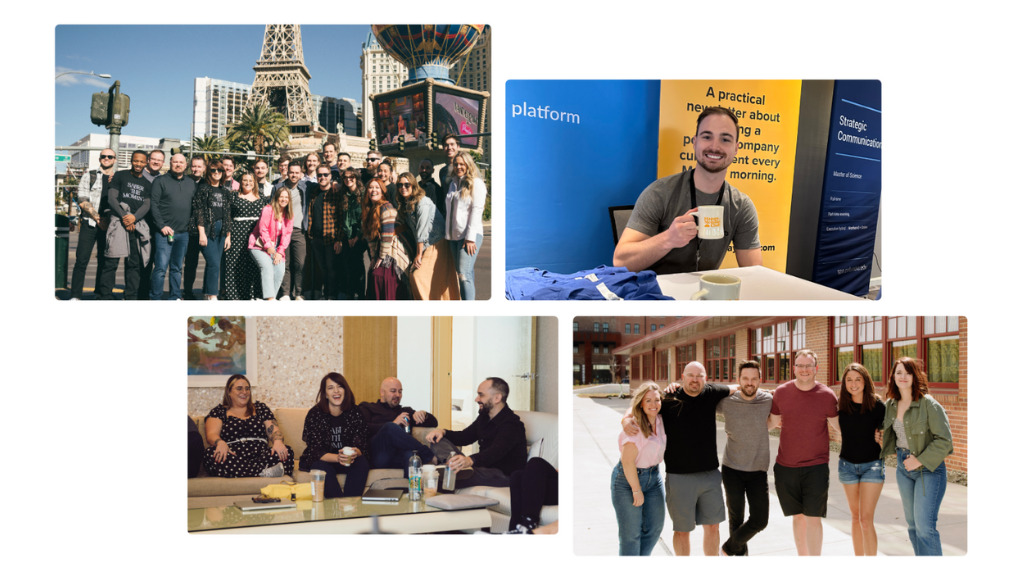
Highlight employee-generated content: When employees share their experiences, insights, and achievements, it can help provide an authentic perspective on the company culture and work environment. You can also encourage more of this by sharing employee-generated content in your all-hands meetings or internal emails.
Create consistent feedback loops: Creating and maintaining consistent feedback loops is essential for employer branding. It demonstrates a commitment to continuous improvement and employee engagement. These feedback loops could be a simple pulse survey to gauge how your employees are feeling, town hall or Q&A sessions with leadership, or one-on-one discussions. All of these forums are great ways to allow employees to voice their concerns, opinions, and suggestions.
Survey results
Survey results took the lead (62%) as the go-to method for tracking internal communication efforts. Survey results are a great way to get a sense of the culture that has already been built around internal communications and see what is or isn’t working. We recommend sending out a survey every 6-12 months, which will help set a benchmark and a way to measure how effective IC efforts have been over time. (We have a great internal communications survey template to help you get started!)
However, the struggle to measure results persists, with 31% admitting they lack an effective measurement system. We believe in a holistic approach, blending qualitative feedback with quantitative data for a comprehensive view of impact.
We did a deep dive on the internal comms metrics to track if you’re interested, but here’s a snapshot of the metrics we recommend tracking:
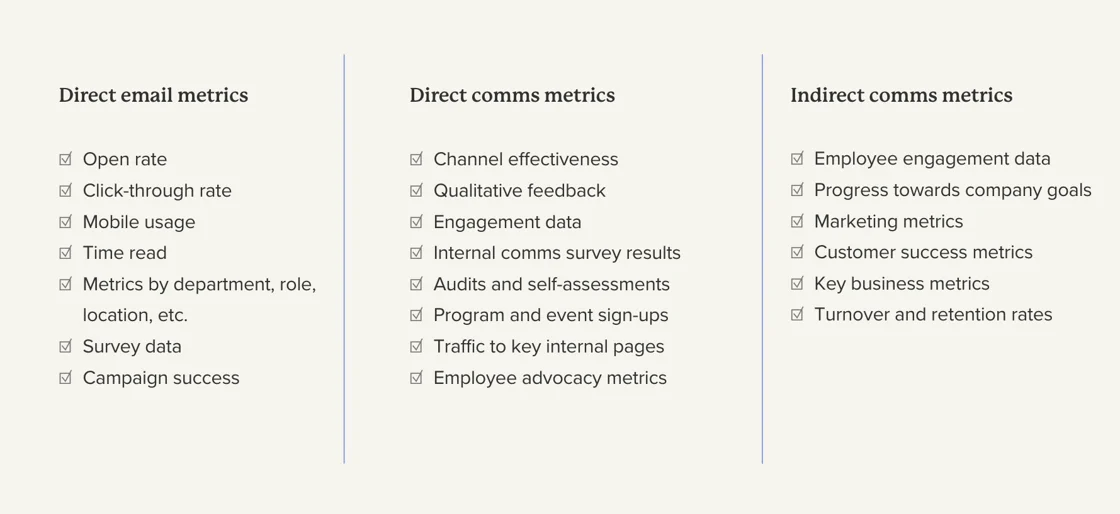
Organizational alignment
Organizational alignment will be a big trend in internal communication in the new year. To achieve this alignment, internal communicators will need to make sure all parts of the business, including individual goals and overall strategies, work together smoothly.
Encouraging cross-departmental collaboration, maintaining consistent messaging, clearly defining goals, and having open and transparent communication are all key components for getting everyone on the same page! Another recommendation is to send out monthly department newsletters. This is a great way for departments to keep the entire company in the loop on what they are working on, the goals and strategies for upcoming or ongoing projects, and to celebrate wins!
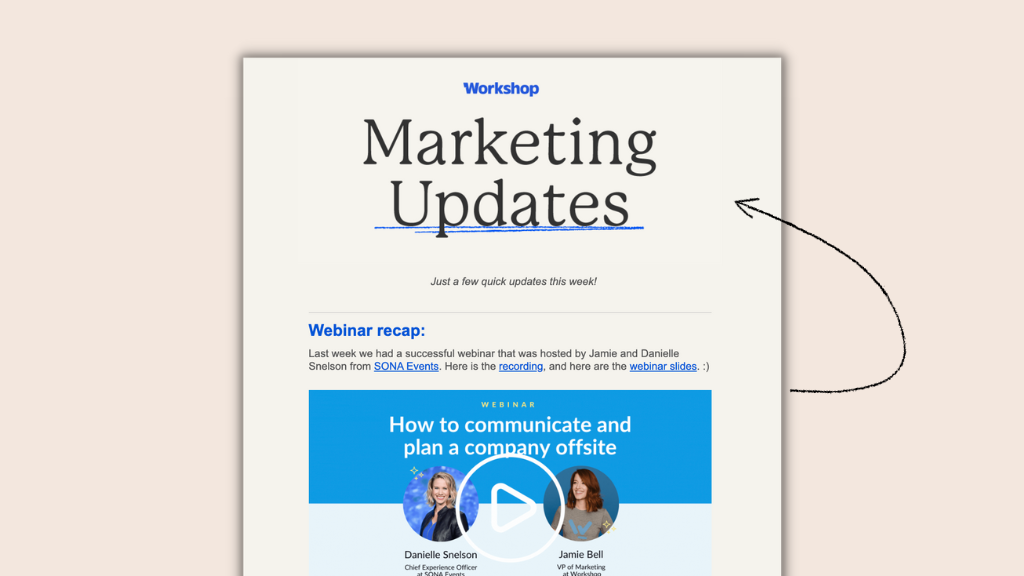
AI
Artificial intelligence has created a shift in every industry, evoking a wide range of emotions. Interestingly, when we included AI as an option for trends to try in 2023, internal communicators felt there was more work to be done before they could dive into the trend (only 7% of ICs were interested in exploring AI in 2023). However, the trend has gained momentum in internal communications, with nearly 40% of IC pros interested in incorporating it into their strategy this year.
The key here is using AI as a support tool, not a replacement for human connection, so you don’t lose that authenticity or the trust of your employees. For example, AI could help you automate repetitive processes, like drafting a first draft, managing translations, or summarizing notes.
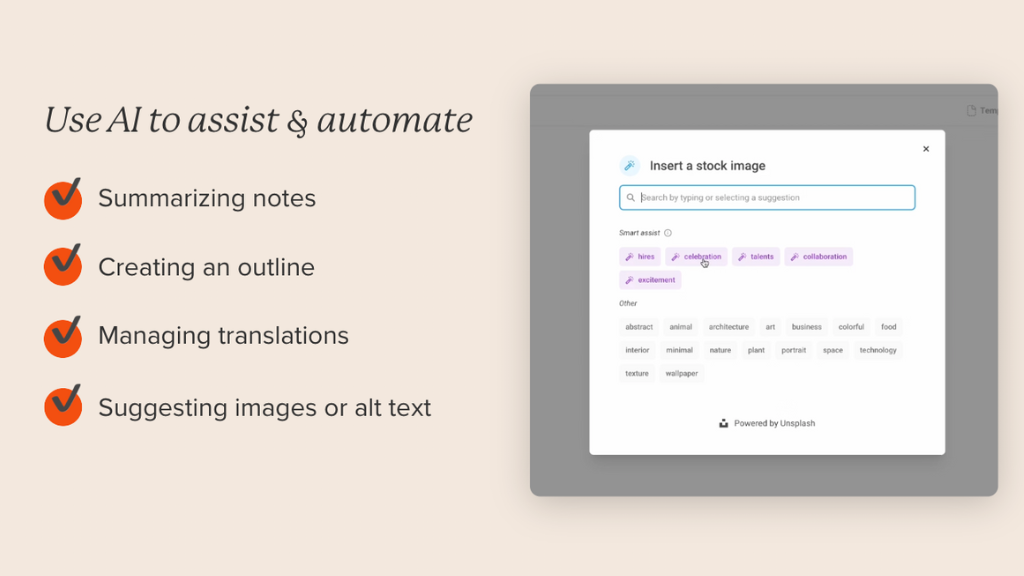
We hope internal communicators will use these current trends to plan (and get inspired!) for the future. What trends are you excited to explore this year?
Download the full 2024 Internal Communication Trends Report!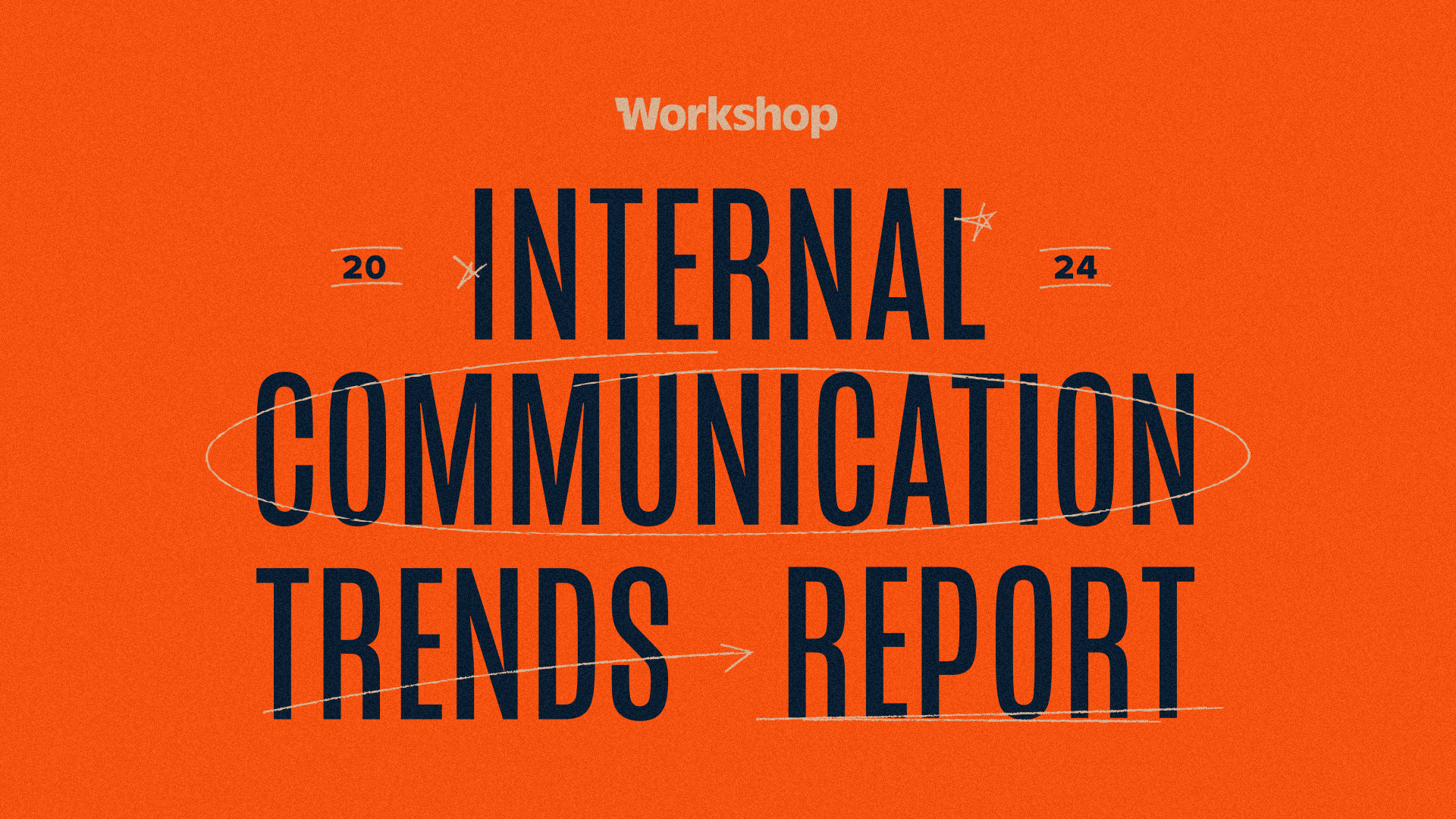
Our report draws insights from a robust sample size of nearly 200 responses across diverse locations and industries combined with data from Workshop customers. Among the notable companies represented are Barrett Distribution Centers, Caribbean Airlines, GoDaddy, Hudl, Nokia, Papa Johns, Rise Against Hunger, Self Esteem Brands, Shipt, Shutterfly, Stanford University, and many more.
Learn more about the current and future practices of top internal communication professionals by downloading the full report.
